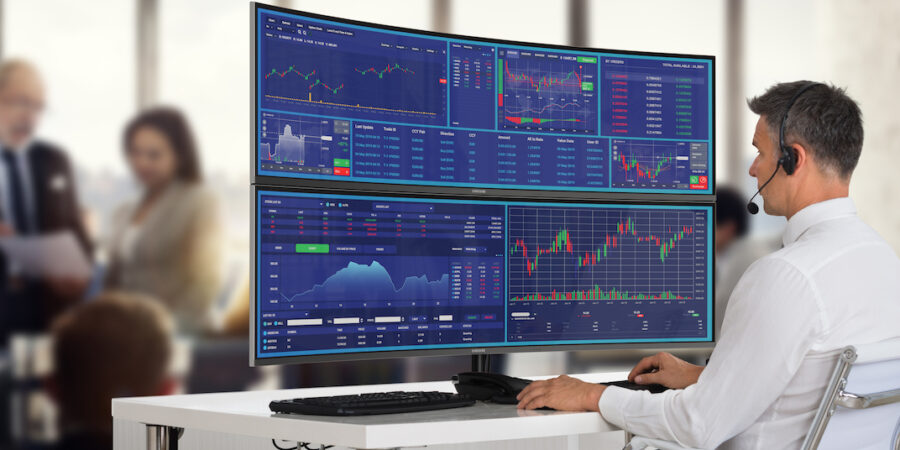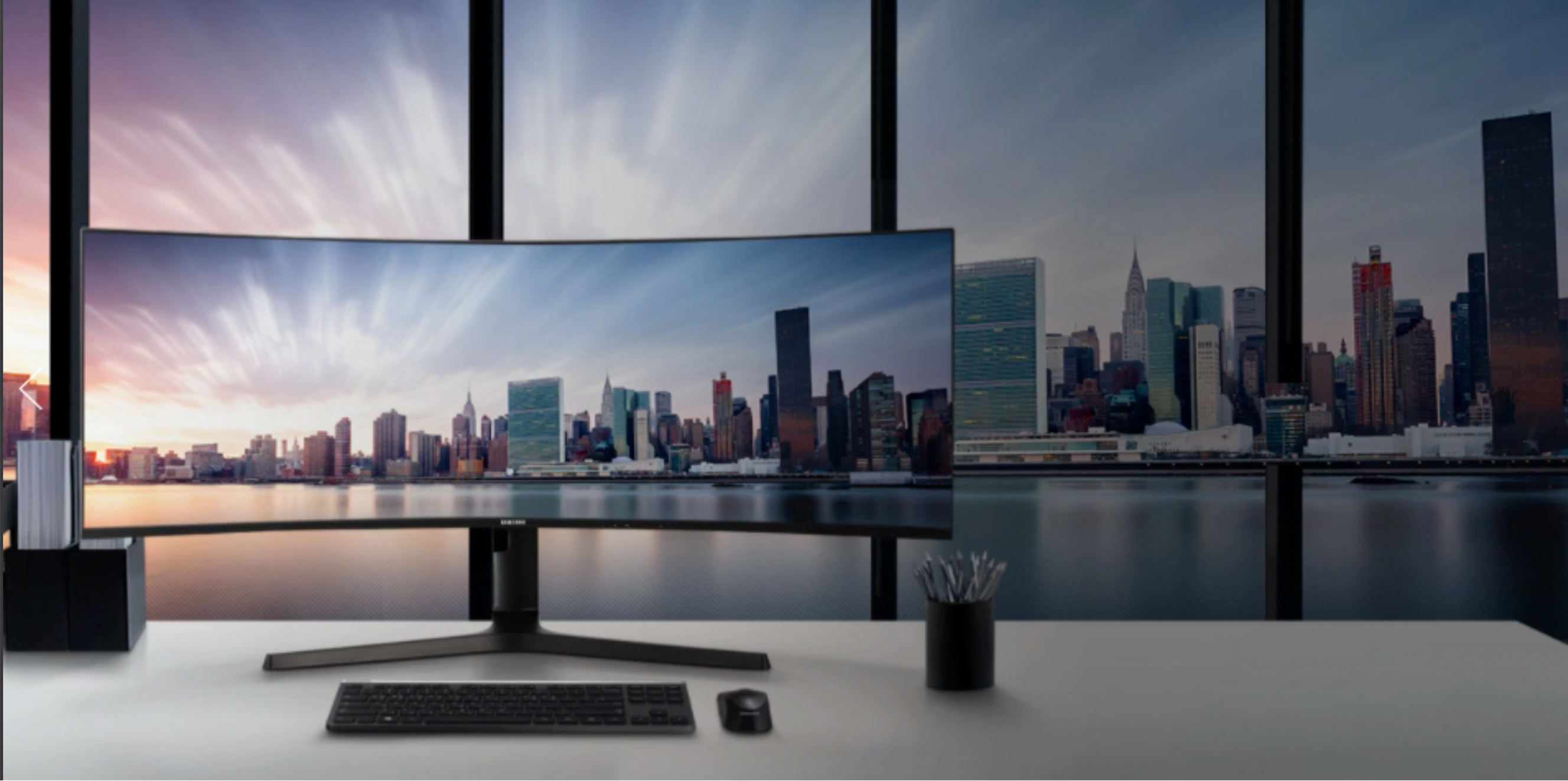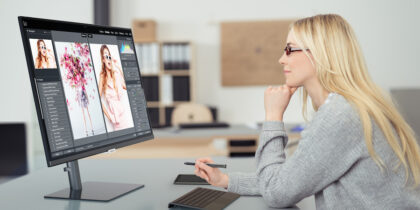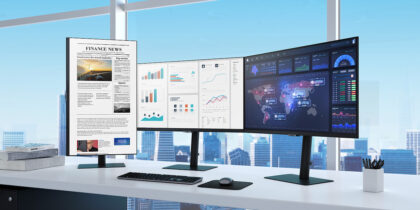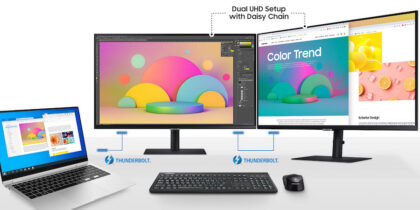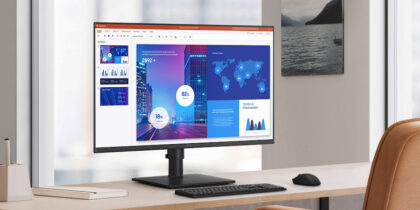Finance experts are charged with watching and responding to market forces, and they need to keep constant tabs on key market indicators — not just in the stock market but countless other data points.
That’s why the world of finance is row after row of screens — from stock trading floors to insurance offices and retail banks. The desktop monitors of finance experts are loaded up and segmented with diverse features like live charting, widgets and news tickers, as well as conventional work apps like email and office productivity solutions.
There’s a lot of data to watch, and therefore high demand for screen real estate. Tiled displays have long been the default solution when selecting monitors for a finance team, but new widescreen monitors offer a tidier, healthier and ultimately more efficient approach for all-day multitaskers.
Going wide
Using two or more desktop monitors provides a larger digital canvas, so you can see more at a glance without having to open and close windows or tabs. But there are some drawbacks. Multiple monitors means multiple power and signal cables, multiple stands and likely a docking station or other peripheral devices necessary for connecting to a laptop or desktop PC.
When two monitors are placed side by side, the center line is very noticeable, because most monitors have dark plastic frames. When users are looking straight ahead, they see a thick border that bisects one of their desktop windows or forces windows to either side.
Upgrade your monitor fleet
Calculate the total cost of ownership of upgrading your business's monitors with five easy questions. Download Now
Widescreen monitors have been around for a few years, but the new models — ranging from 34 inches to 49 inches wide — are the best size monitor for stock trading and finances because they provide the seamless display space a financial professional needs.
Plug-and-play USB-C technology declutters multitasking desktops, consolidating monitor attachments down to a single cable connecting the PC to the screen. And in the back of the screen, multiple USB ports offer a hub for peripherals.
Every cable, every power supply, every docking station, is a potential point of failure, particularly important in industries that demand maximized uptime. So simplified desktop connections are welcomed by users and IT teams alike.
Easy viewing
Jobs that require all-day screen time come with a lot of workplace health concerns, like potential ergonomic issues. There’s not just eye strain to worry about, but also muscle and nerve strain from users continuously swiveling their head to different sides of the screen.
The latest generation of curved widescreen monitors directly addresses these issues by widening the screen’s field of view. Samsung’s curved monitors match the curvature of the human eye, allowing for the average user’s peripheral vision by bringing the display’s outer edges to roughly the same focal distance as the center.
Research by major universities such as Harvard Medical School has shown that curved screens reduce eye strain and the need for users to look left and right to view different parts of their screen.
Those who use monitors for trading benefit from curved monitors, which provide greater immersion, as well as privacy and confidentiality for dealing with important, regulatory-compliant data.
Samsung’s new line of high-resolution monitors, with Intelligent Eye Care technology, reduce blue light emissions and auto-adjust their brightness and color temperature according to the surrounding lighting, so the screen is easier on the eyes.
Premium visuals
Simple data charting and ever-changing numbers may not require high resolution or wide color range, but these are add-on benefits of premium displays that support high dynamic range (HDR) and 4K (or beyond).
In some use cases, HDR and the billions of colors available will give analysts a better view of complex data sets in charts and graphs that require extensive color gradations. HDR, for example, makes dark areas darker and bright areas brighter — providing higher contrast and fine detail that might otherwise be lost or softened on a lower-quality monitor. IPS panel technology, meanwhile, delivers crystal-clear images and text across a 178-degree field of view.
The big picture
Extra-wide monitors provide multitasking financial workers with a treasured productivity tool — a screen that shows them the big picture at all times. And with a curved widescreen monitor, a finance professional can finish their workday with happier eyes, neck and shoulders.
Explore Samsung’s full range of curved widescreen monitors, designed for expansive productivity and increased comfort. And walk through the market drivers, societal shifts and technologies of the reimagined office in Samsung’s free, complete guide.
